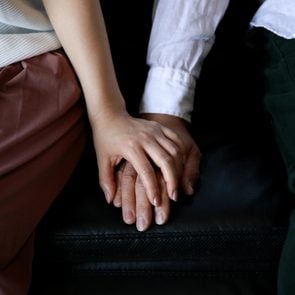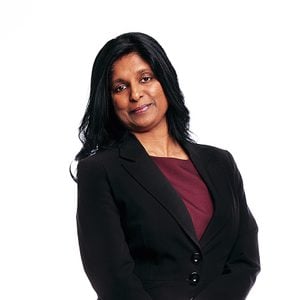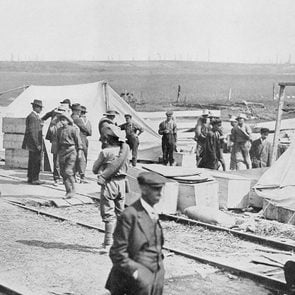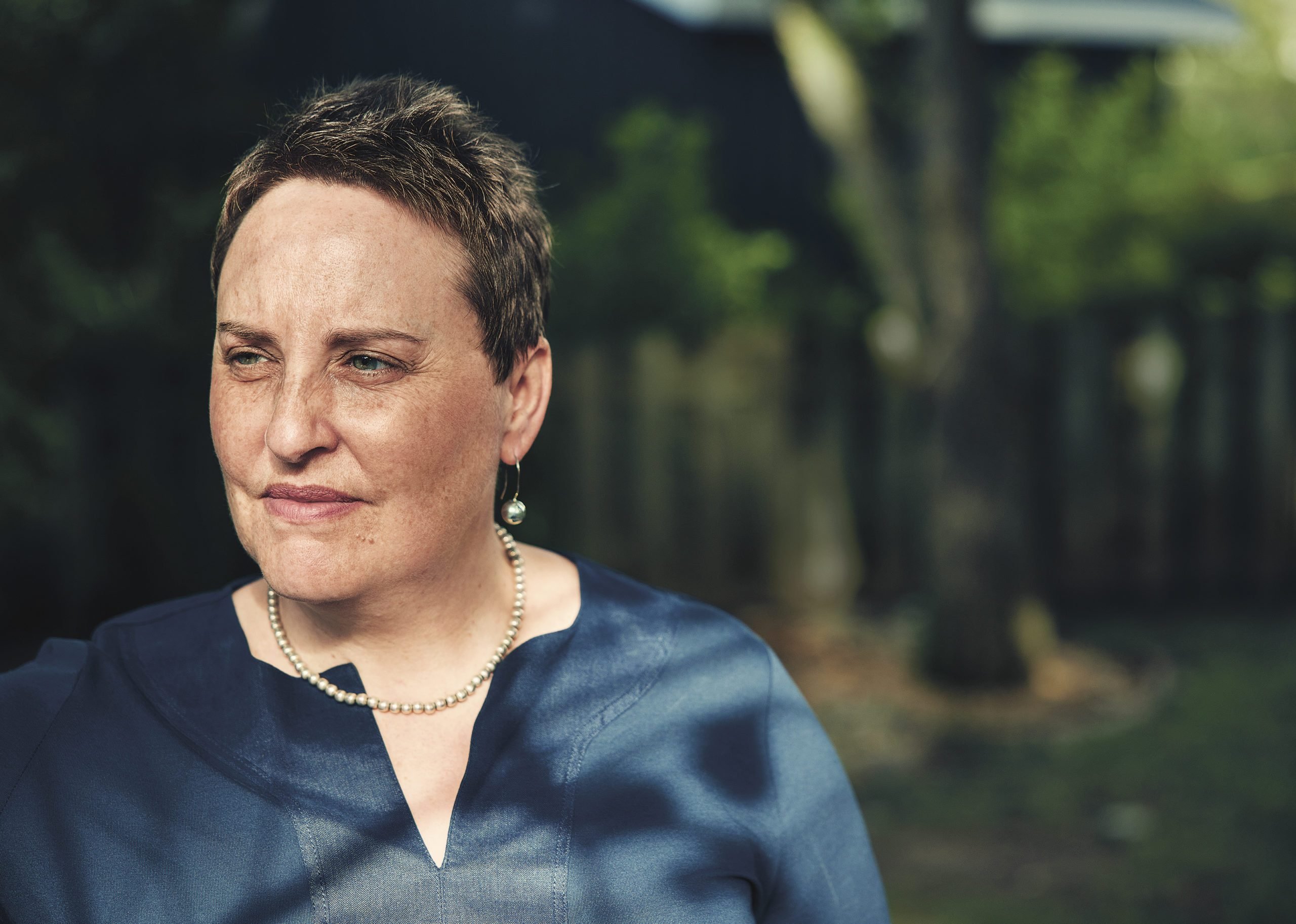
Better Late Than Never
I’m 10 years old, away at my first sleepover camp. The rest of the girls in my cabin are trying to put together a skit for the camp’s variety show, and I can see that it isn’t going to come together the way they imagine. I have a sixth sense about these things, like I’m on the outside looking in when I’m supposed to be part of something. I want to speak up and tell them how to fix it, but I’ve learned that being a know-it-all does not make me popular.
There was always something about me that most people considered “different.” As a kid, I didn’t enjoy sitcoms or skip rope like other girls my age. I wasn’t comfortable hugging friends, but I did love listening to discussions about politics. I’ve always been talkative and inquisitive, which wore out the patience of my friends and sometimes even the adults around me. My Grade 4 report summarized my social deficiencies with “needs improvement.” I stuck out, but I gradually learned to be less conspicuous.
It wasn’t until I turned 46 that I learned my uniqueness has a name: autism.
That was over three years ago. My diagnosis was like discovering a piece of my brain, picking it up, putting it in place and feeling whole for the first time. This was also like receiving the key to unlock my life and live for the first time—according to my own values, principles, beliefs and choices instead of weighed down by the expectations and assumptions of others. What I’ve found out since is that there are a significant number of others like me—individuals who weren’t identified as having autism until midlife. And for reasons that are still coming to light, many of them are women.
Although autism has a high profile today, it was only identified in 1943 by the American child psychiatrist Leo Kanner. He’d observed antisocial children who became obsessed with certain objects and reacted poorly to unexpected change. Kanner named this disorder infantile autism. A year later, Austrian pediatrician Hans Asperger published a study about children in his clinic who exhibited similar characteristics. His findings were largely overlooked until 1981, when the term Asperger’s syndrome came to be applied to higher-functioning individuals. Asperger compared them to “absent-minded professors” who might be socially awkward but intellectually precocious. The line between autism and Asperger’s was erased in 2013 when the term autism spectrum disorder (ASD) was introduced, to account for the many degrees and kinds of autistic behaviours.
Today, approximately one in 66 Canadians is diagnosed on the autism spectrum, and those numbers are on the rise, possibly because of improved diagnostic methods and awareness of the condition. A neurodevelopmental condition that affects brain development, autism can cause communication problems and a lack of awareness of social cues—for many who have it, social interactions must be learned as opposed to intuited.
Being autistic means I can appear dispassionate, even though I am empathetic. I am highly loyal, honest, straightforward and direct. I’m driven by intellectual inquiry, and thus more interested in why something happened than how it happened. I am capable of stunning people by reciting credit card numbers from memory, and sometimes speak quickly and with a sense of conviction because I have moved along a conversation in my mind while the other person is still formulating his or her next thought. At work, I have been both highly praised for these attributes and harshly admonished. This wide range of reactions to the same behaviour is a reality for women with undiagnosed autism and one of the reasons why more extensive diagnosis and research into autism in women are necessary.
Autism is diagnosed four to five times more commonly in boys than in girls. Growing research suggests that autistic characteristics in girls and women may go unrecognized by health and education professionals because they present differently than in boys and men in clinical settings, as well as in daily life settings such as school and work. Why are girls and women in particular going unrecognized?
Yani Hamdani, a clinician-scientist at the Azrieli Adult Neurodevelopmental Centre at the Centre for Addiction and Mental Health in Toronto, offers a few possible explanations. One is that autism has historically been perceived as a predominantly male condition, including how it has been represented in popular culture. From Raymond in Rain Man to Sheldon Cooper in The Big Bang Theory, characters with autistic traits in movies and TV shows have mainly been male. Autism researcher Judith Gould, former director of the Lorna Wing Centre for Autism in Kent, U.K., believes that female autism has been understudied from the outset, noting that Dr. Leo Kanner had only three girls in his group of 11 research participants.
Screening and diagnostic tools may not be as sensitive to autism in girls and women because they have been predominantly developed based on studies with boys. A girl’s obsessive reading would not necessarily be seen as an indicator of autism, while a boy’s preoccupation with lining up toy cars or trains might very well serve as a marker. “Girls and women may learn strategies to hide, mask or camouflage their autistic ways of being, doing and socially interacting,” Hamdani tells me, “and may be more adept at doing so than boys or men, suggesting that there may be different gender socialization processes at play.”
This reminds me of how I paid particular attention to the most popular girls in my classes at school, adopting their attitudes and ways of communicating as my own. Initially, I was not great at camouflaging; it can only be finessed with frequent practice. So I focused on other strategies to combat my differentness. I was involved in a wide range of activities, from dancing to figure skating to acting to chorus singing, and I kept a to-do list to ensure everything was managed. It was almost as if every minute of the day was planned and structured so that I could focus more on what I was doing and less on how I was doing and even less on how I felt I was doing. Eventually, I learned to feel a sense of belonging. And while social acceptance offered a reprieve from feeling like I was living on the margins, it also delayed my diagnosis.
I was the youngest of 10, with parents who were 40 and 51 when I was born (older fathers are more likely to have autistic children). When I was eight, my mother moved to Toronto to pursue a second master’s degree while my father stayed home in Antigonish, N.S., and served as the primary parent. This helped instill in me the notion of equal opportunity for women, but it also created a void in my life.
My increasing isolation, stress, anxiety and confusion led me to struggle both academically and socially, leaving a trail of concerned teachers and friends. A call home from a junior high vice-principal worried about my emotional health finally made the situation impossible to ignore. I was floundering at school; my poor math and science marks meant I was failing Grade 9. Dad met with my teachers individually and successfully negotiated a pass. But I only felt self-loathing: I was stupid. No one suspected that the underlying issue was autism.
My grades improved, but throughout high school I still felt a sense of social isolation, and our stressful home situation only exacerbated it. In 1988, the fall after high school graduation, I had a son with my boyfriend, Steven. We knew we couldn’t raise him and placed him for adoption, though we’ve had the good fortune of an open relationship with him since he was five. We then completed our undergraduate degrees—mine a bachelor of arts with a major in sociology and a minor in history, followed by a year of business college.
In 1994 I found work as a records assistant for a Maritime university’s alumni and fundraising programs. Soon after, I married Steven. I was good at my job—it provided an avenue for me to apply my attentiveness to detail. But my overall confidence took a severe hit when only 17 months after the wedding, Steven announced he was leaving me. Our lack of compatibility had not been obvious to me. I had convinced myself we belonged together because we were together rather than questioning if we were truly happy.
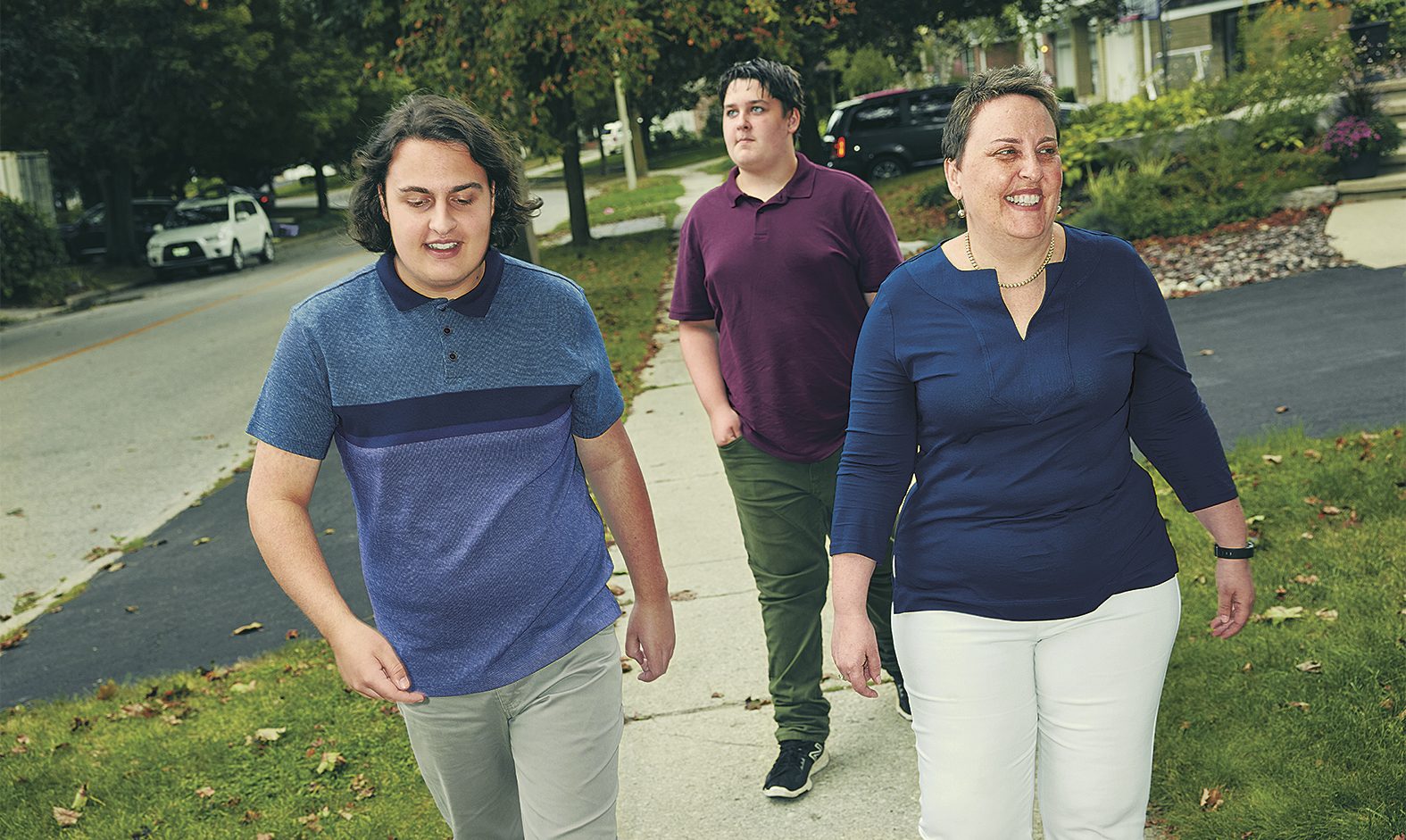
Two months later, I met Ryan. We married in 2000, and two sons followed: Adrien and Rene. Meanwhile, my career in fundraising continued to flourish. Always underlying my success was my undiagnosed autism. To combat my continued struggle to attach words to concepts, I listened attentively to people I considered articulate, then memorized their words, phrases and sentences, and recorded them for future use. This presented as a commitment to self-improvement, while in reality it was one of my obsessions—my version of lining up toy cars.
New jobs took us to Regina in 2011, and for me it was nothing short of complete upheaval. As I pushed higher at work—as well as further into middle age—camouflaging my autism left me fatigued, angry and resentful.
Our family situation had its own stresses. Adrien read at age three, wrote at age four and had astounding recall, yet he struggled socially beginning in primary school. His teachers noticed immediately that he avoided making eye contact, often preferred to be alone and had interests in topics well beyond his age level. Finally, in 2012, when he was nine, he was diagnosed with autism. Then, the next year, Rene’s Grade 1 teacher began to express concerns about his challenges in focusing, processing information and interacting with classmates. Regrettably, because of our stress levels and the fact that Adrien and Rene were very different from each other, autism didn’t occur to us. Meanwhile, I was pursuing an MA in Canadian history, ultimately as a full-time student, and entered therapy to address my growing state of anxiety. This was my third time in counselling and the third time I would dig deeper, feel better—and miss the most important component of the picture. Autism never entered the conversation.
In 2015, what seemed like another great opportunity appeared: I was recruited for a new job in Waterloo, Ont. There, I began being complimented and recognized for my work like never before. Given my underlying self-loathing, I didn’t know how to deal with it. As I approached my one-year work anniversary, all the symptoms of my undiagnosed condition manifested themselves in my work environment: sensory overload and being baffled by social cues and office politics.
At home, Rene’s symptoms—verbal precociousness, challenges focusing and trouble with interactions at school—were becoming more prevalent. We began the assessment process in early 2017; at the same time, my emotional troubles hit a crisis point, and in May, I had a complete breakdown at work. The day after we received Rene’s autism diagnosis, I asked my family physician to refer me for my own evaluation. “I think I have it, too,” I explained. My assessment consisted of completing in-person exercises as well as the Adult Autism Spectrum Quotient, a self-reporting survey comprising 50 statements, such as “I would rather go to a library than a party,” “I am fascinated by numbers” and “I find it difficult to work out people’s intentions.”
When, two months later, I received my official autism diagnosis, I felt relief. Finally, everything started to make sense. I couldn’t get over the positive effect of the diagnosis. For the first time, I fully enjoyed life.
I sought accommodation at work but instead lost my job. Since then I’ve become an entrepreneur. My new firm is called Liberty Co. to signify that confronting the facts brings us freedom. The firm’s goal is to increase the participation level of the neurodiverse population in the workforce. I am also the catalyst behind a collective focused on building gender equity through supporting other women. And I am sharing my story and the stories of others, often under the banner of the Inclusion Revolution—a worldwide movement launched by the inclusivity leader Caroline Casey. Championing gender equity and neurodiversity provides an avenue for me to be an advocate for women with autism, including as a participant in research into autistic women’s experiences in the workplace.
Hamdani highlights the urgency around early female diagnosis because the burden of late identification can be huge. The psychologist who conducted my assessment described my background as “a complicated picture” because of the number of environmental and social factors involved. Unfortunately, my case is similar to others. By the time some women with autism are diagnosed, their mental health has reached a crisis point, and they are experiencing depression and even suicidality.
Self-awareness is the greatest gift you can give yourself, and knowing my strengths as well as my limitations, both related and unrelated to my autism, has allowed me to build my self-esteem and connect with others. My husband is the main beneficiary of all this positive change—I’ve relaxed and I’m more focused on myself and us. Finally, I am a proud autism mom, modelling for my children how you can be unashamed, unafraid and undeterred as an individual with unique abilities. To honour my newfound freedom, I refer to myself as “Real Wanda.” I like her!
Next, read the heartwarming story of how a support group for parents of children with autism inspired an entire town to be more inclusive and accessible.
© 2020, Wanda Deschamps. From “I learned I had autism at 46,” Broadview (March 6, 2020), broadview.org
Brianna Toor lives with her husband and dog in Oliver, B.C., a small town in the Okanagan Valley. A winemaker and viticulturist, Toor, 35, moved from Victoria four years ago for work. She knew that wildfires were a fact of summer life in the region, but she wasn’t prepared for the sheer size and proximity of the Nk’Mip Creek wildfire, which blazed across the B.C. interior in 2021. Parts of her town, as well as nearby Osoyoos, went on evacuation alert.
Extreme weather events are on the rise across Canada, driven by the climate crisis. Last year saw record heat waves and rainfall reported across the country, as well as above-average hurricane activity in the Atlantic. And, according to the Insurance Bureau of Canada, 2020 was the fourth-worst year on record for natural disasters in Canada, with floods, heat waves and storms causing an estimated $2.4 billion in insured damage. Climatologists predict worsening disasters in the coming years.
And yet, a 2014 survey found that, while 98 per cent of Canadians had participated in some kind of emergency planning activity, only 69 per cent had an emergency contact list and just under half had a home emergency kit. Toor was prepared and had a bag packed for an evacuation, but she still felt shocked that they might be forced to leave their home.
By taking just a few preventive steps, you can alleviate the potential physical, mental and financial impacts of a natural disaster on you and your family.
Know Your Risks
Consult your community’s Emergency Response Plan to learn what risks you need to be prepared for and how you and the community can help mitigate them. “What we hear most often is, ‘I didn’t think this would happen to me, so I wasn’t prepared,’” says Dave Fraser, an emergency-management responder with the Canadian Red Cross who has been deployed to many disaster sites, including wildfires in Saskatchewan and to New Jersey after Hurricane Sandy hit the state.
Fraser lives in Ottawa, where proximity to the Ottawa River and the Rideau Canal, combined with possible heavy rainfall, makes flooding a risk. He takes preventive actions like making sure his eavestroughs are clean and that his downspouts carry water well away from his home’s foundation. When there’s a flood warning, he moves valuables out of his basement.
It’s also important to familiarize yourself with the information sources and alert systems you’ll need to consult in case of an emergency. Depending on where you live, those sources may include local media, weather apps and conservation authorities.
Understanding what the risks are helps you develop an appropriate plan of action and can also quell some of the stress caused by the unknown. “The best way to prepare mentally is to prepare physically,” says Fraser.
Make a Plan
Your emergency plan should lay out safe ways to evacuate your home, the spot where you and your family will meet if you need to evacuate while people are at work or at school, how you’ll communicate with each other, and emergency contacts you can call.
Include two meeting spots: one nearby that you can go to in case of a localized event like a house fire and one outside your neighbourhood in case of a more widespread disaster. Don’t forget to arrange for your pets, too. Some evacuation centres don’t allow pets, so it’s a good idea to have a boarding plan.
Once you’ve made your plan, practise it! The Red Cross advises families to rehearse their plans twice a year, when the clocks change. These are also good times to test your smoke alarms and carbon monoxide monitor. Practising your plan will ensure that you and your family are better able to act when you have to.

Collect an Emergency Kit
In the event of a shelter-in-place order, you should be prepared to survive for a minimum of three days at home. Your home kit should include food, water, first-aid materials, medication and medical equipment, flashlights and a radio (plus backup batteries), spare sets of keys and any other supplies you need to survive for 72 hours.
The Red Cross also advises Canadians to have a “go bag”—it can be any bag that’s easy to carry—ready in the event that rapid evacuation is necessary. Toor and her husband’s go bag has copies of their passports, identification and important documents, plus cash, personal hygiene items, water bottles and extra clothes.
You can also include a phone charger, snacks, emergency contact lists, a back-up drive with photos and small items you can’t live without. Store your go bag in an easy-to-access location, like a closet near the front door. If you own a vehicle, it’s a good idea to have a car emergency kit in the trunk.
Fraser reminds people that in an emergency, cash is king. Ensure you have enough on hand to cover immediate needs, such as gas and food.
Do Your Part
Last year, over 1,500 wildfires in B.C. burned more than 868,600 hectares—including the entire village of Lytton. By the end of July, the Nk’Mip Creek wildfire forced the evacuation of at least 248 households in Toor’s area. Luckily, she and her husband weren’t among them. Still, the stress of living under constant threat was exhausting. For a month, she could see the fire blazing around her every time she stepped outside. She frequently checked the evacuation alert online.
“It really affected my mental health,” says Toor, adding that one of the hardest things about living in a wildfire zone is feeling powerless in the face of climate change. She’s made more eco-conscious choices in her daily life. She cycles about six kilometres every day to the vineyard instead of driving. She’s smarter about how often she waters her garden. At the winery, she’s reduced water usage and encourages other growers and winemakers to do the same.
For Fraser, taking action has meant sharing his emergency response plan with his neighbours. He recommends maintaining relationships with elderly neighbours and regularly checking in. These bonds can be critical in an emergency. Being prepared, he says, can go a long way toward increasing your resilience to natural disasters.
Think it could never happen here? Read up on the worst natural disasters in Canada’s history.
If you think the only job of antifreeze (coolant) is to cool your car’s engine during the summer and prevent freeze-up during the winter, read on. Coolant also plays an important role in preventing corrosion caused by electrolysis. Electrolysis occurs when two dissimilar metals start swapping electrons, causing the metals to corrode. Since an engine has aluminum, copper, cast iron, steel and magnesium alloys, electrolysis will slowly eat away at its innards.
Coolant has additives to prevent all of that electron swapping. But, as coolant ages, the additives are depleted and can’t do the job anymore. In fact, worn coolant becomes a pretty darn good electrical conductor, accelerating internal electrolysis. The good news is that it’s pretty easy to check the conductivity of your coolant with a digital multimeter. If the conductivity is high, it’s time for a coolant flush and fill. Here’s a quick way to check it.
How to Test Coolant
Begin with a cold engine. Remove the radiator cap and start the engine. Set your digital multimeter to DC volts at 20 volts or less. When the engine reaches operating temperature, insert the positive probe directly into the coolant. Rev the engine to 2,000 rpm and place the negative probe on the negative battery terminal. If the digital meter reads .4 volts or less, your coolant is in good condition. If it’s greater than .4 volts, the electrolysis additives are exhausted, and you may be in the market for a new radiator, a water pump or a heater core in the future. All of those are far more expensive than a simple coolant change.
CAUTION! When you work on or around a running engine, wear safety glasses and tight-fitting or short sleeves to keep from being drawn into the moving parts.
Next, check out 20 essential tools every home mechanic needs.
